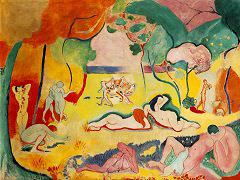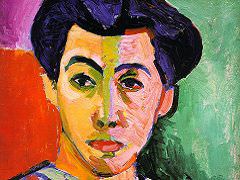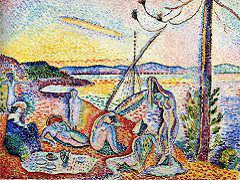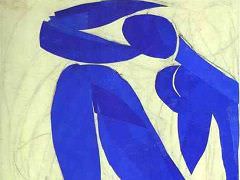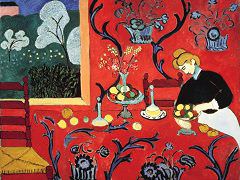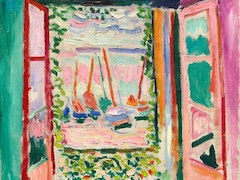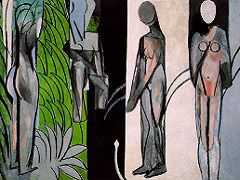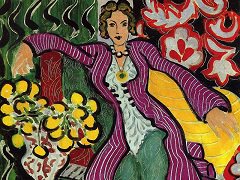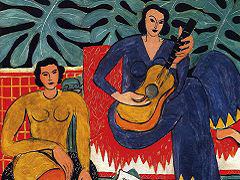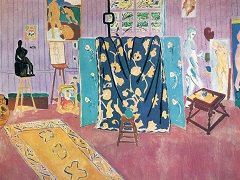Bathers by a River, by Henri Matisse

Bathers by a River is considered by Henri Matisse to be one of the five most "pivotal" works of his career, and with good reason: it facilitated the evolution of the artist's style over the course of nearly a decade. Originally, the work was related to a 1909 commission by the Russian collector Sergei Shchukin, who wanted two large canvases to decorate the staircase of his Moscow home. Matisse proposed three pastoral images, though Shchukin decided to purchase only two works, Dance and Music.
Four years later, Matisse returned to this canvas, the rejected third image, altering the idyllic scene and changing the pastel palette to reflect his new interest in Cubism. He reordered the composition, making the figures more columnar, with faceless, ovoid heads. Over the next years, Matisse transformed the background into four vertical bands and turned the formerly blue river into a thick black vertical band. With its restricted palette and severely abstracted forms, Bathers by a River is far removed from The Dance and Music, which convey a graceful lyricism. The sobriety and hint of danger in Bathers by a River may in part reflect the artist's concerns during the terrible, war torn period during which he completed it.
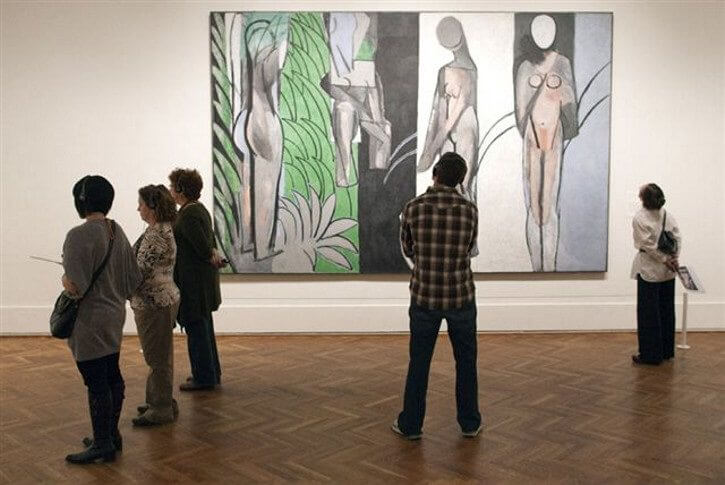
The 8-foot by 12-foot Bathers by a River combines an extreme of abstraction with readable figurative images. Over years, Matisse changes it from a lightweight pastel-colored beach scene to an exotic Eden, a gigantic icon with four female demigoddesses outlined against a row of broad flat vertical panels, with a sinister - or is it benign? - white snake rearing up its head from the bottom of the canvas. We feel something intensely symbolic, but Matisse doesn't feel the need to explain the iconography.
This amazing painting, within a period of staggering artistic ferment, emerges out of Henri Matisse's complicated search for direction, a search that took many turns before the artist found his direction. Or were these very turns Matisse's true direction?

